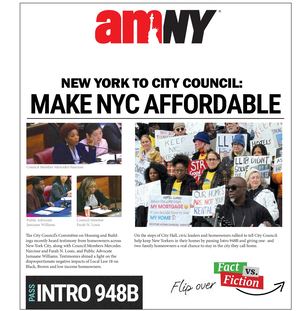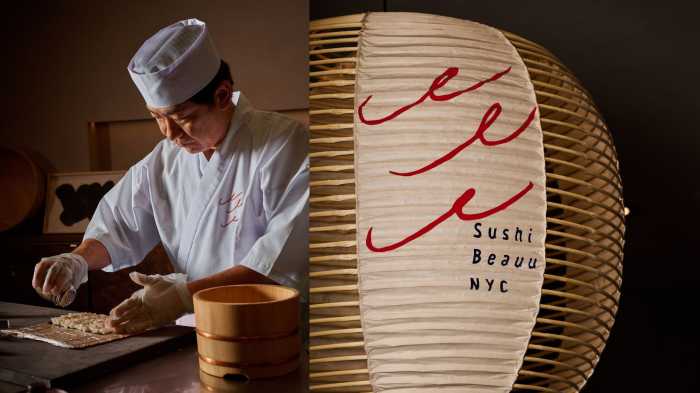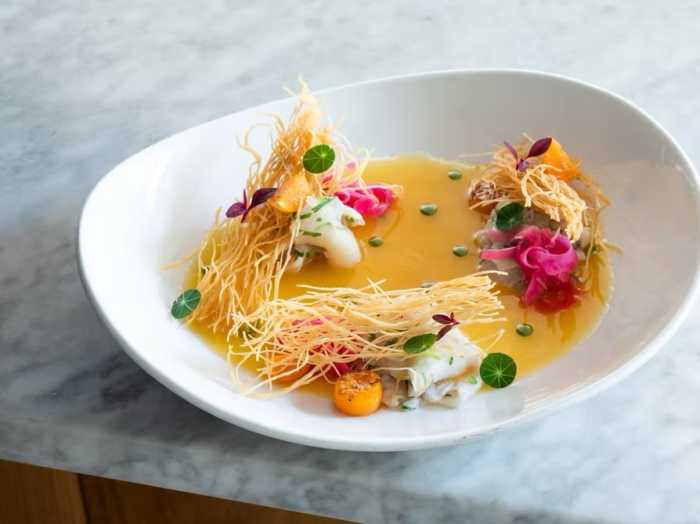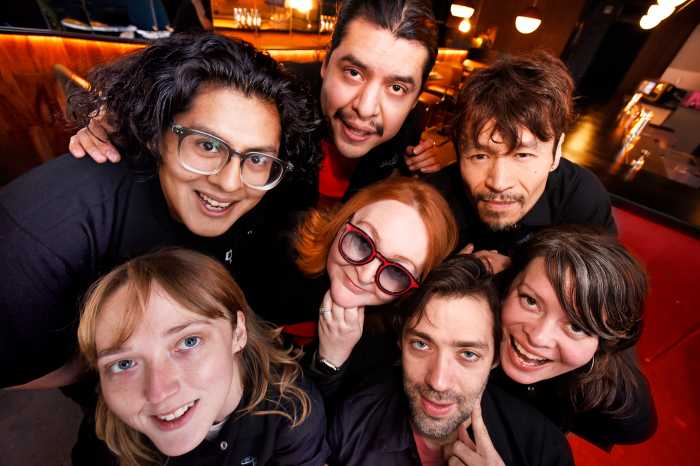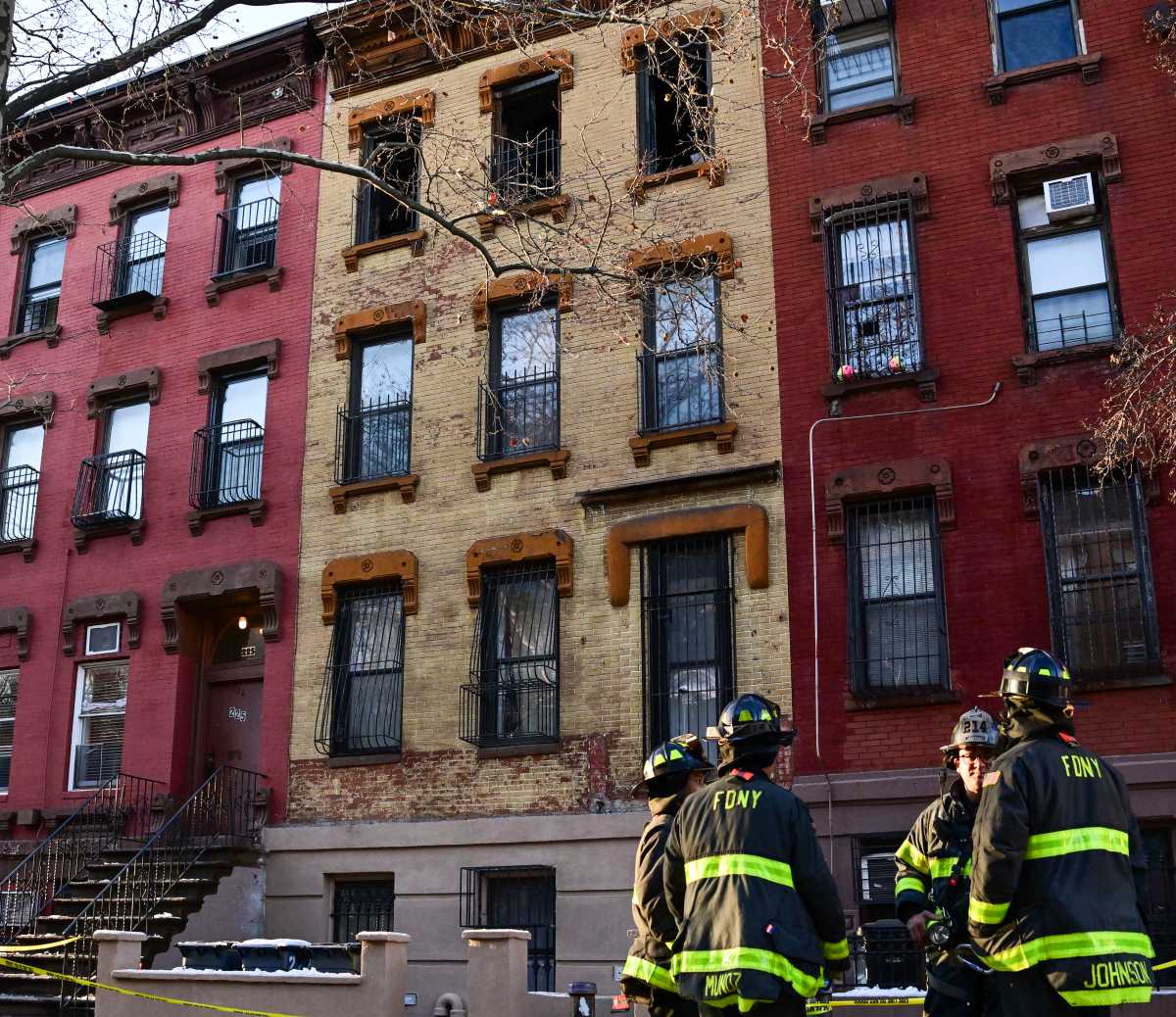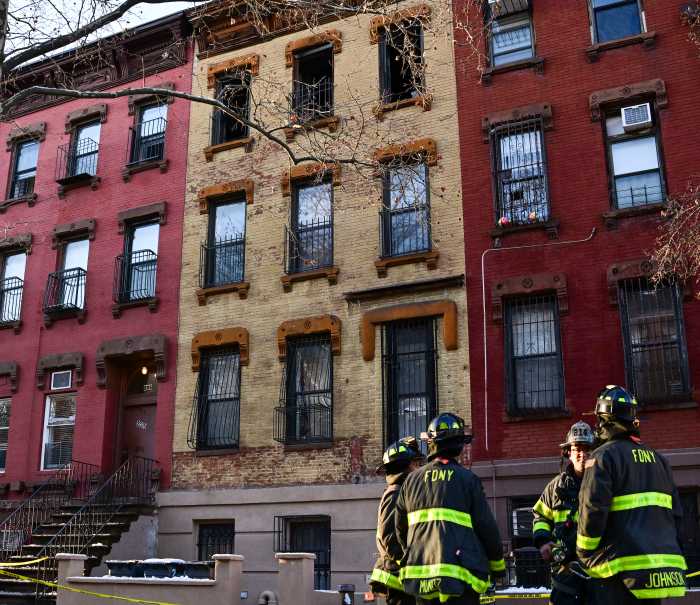When Sella Malin discovered House of Kava, she was struck by the tight-knit community formed there between regulars and employees. For people like her who rarely — if ever — drink, the Bushwick bar felt almost like an oasis.
“It really is a sanctuary for customers,” said Malin, who was hired as a bartender last November.
On its website, the Central Avenue business uses similar language, billing itself as “a second home that anyone can call their sanctuary” and Brooklyn’s first kava bar. Kava, a plant-derived drink originating in the South Pacific, is pitched as a healthier and safer alternative to alcohol that helps people relax, according to the shop’s site (although the FDA has warned of the potential for liver damage). House of Kava became a gathering place for sober people to socialize, Malin said, one of the few of its kind in the city.
Kriss Marchena, who started working at House of Kava about a month after Malin, felt similarly. After years working in the service industry, the Queens native said it was nice to be somewhere where you wouldn’t be harassed by drunks.
But the honeymoon phase would be short-lived for both of them. In just a few months, they would lead the charge to unionize the kava bar. Not long after the Supreme Court’s Janus ruling against mandated union dues, and despite organized labor’s national decline, almost all of House of Kava’s workers would strike. And when management didn’t budge, Marchena and Malin would help lead the new union in an unconventional direction.
Labor struggles
Sitting across from Marchena at a coffee shop in the neighborhood last week, the duo rattled off an exhaustive list of allegations, ranging from wage theft to management being overly involved in their personal lives. Malin said it felt like “a toxic environment of not being respected for the work you did,” and Marchena described a constant state of insecurity about hours, unevenly enforced punishments for minor errors and a fear-based management approach.
Even though Malin quit after several months, she kept patronizing House of Kava. She felt attached, and hosted guided meditation sessions there, she said. But the relationship between the small staff and ownership continued to deteriorate, Marchena said. In the spring, workers decided it was untenable. Amid an ongoing pay dispute and with rumors of impending firings, Marchena said five of the six employees did the only thing they could think of to improve conditions; they formed a union. They connected with the Democratic Socialists of America’s local Service Industry Working Group to learn about their rights and to plan for action.
In June, the workers were ready. Marchena and four other employees, representing all but one staffer, delivered a letter of demands and announced the formation of an independent union.
“We the undersigned workers, in the interest of maintaining House of Kava as a community institution that promotes wellness, creativity, sobriety and emotional support, have joined together to form a union to address issues that endanger the space we have come to know and love,” it begins, according to a copy provided to AM New York. “This is a job but also a home, and we feel deeply attached to the space, the people and the sanctuary both constitute. We are loyal to this establishment and the community that sustains it, and we all see ourselves working here for a long time.”
The labor dispute comes at a low point for unions in the United States, but the landscape for organized labor is brightest in New York, where about 24 percent of the workforce in the city and the state belong to a union, according to a 2017 report from the Joseph S. Murphy Institute for Worker Education & Labor Studies. That’s more than double the national average. The percentage of workers in a union has been rising in the public and private sector in the city since 2012, the report found.
The House of Kava workers hoped to join the trend, issuing a list of demands that addressed concerns about pay, scheduling and personal boundaries, and requests “a clear procedure for handling workplace issues.”
Speaking via email from the company’s account, an owner declined to comment, saying that they were “instructed to not speak to any media personnel due to litigation that might happen in the near future.”
Vanessa Lopez, House of Kava’s general manager since March, said employees had plenty of opportunities to be heard.
“We would have sit-down meetings once or twice a month where they would, you know, express their concerns if they had any and we would come to a vote and a solution,” she said.
The plan to unionize emerged while Lopez was in Miami on business for several weeks, she said.
“I came home and it was kind of presented to me, and they walked out,” Lopez said. “I just requested that we all talk together, and they refused to talk to the owner. And the owner didn’t want to acknowledge them as a union without talking about the terms beforehand, which I think is valid, honestly.”
While Lopez acknowledges that she feels like both sides could have handled the situation better and communicated more clearly, she said it escalated unnecessarily and could’ve been more easily resolved.
“I used to be a part of a union myself and I believe in unions, I just think they went about it in the wrong way,” she said.
Out on strike
According to Marchena, just two hours after the letter was delivered, a barback who signed it was fired, and the next day when the budding union tried to get the employee reinstated, Marchena was fired, too. Lopez said she already planned to fire Marchena when she returned from Miami, for matters unrelated to the union. Lopez said the barback was still in her trial period and had “probably only trained for a week or two,” adding that House of Kava has since eliminated the position of barback altogether.
The firings left the remaining employees with little choice, Marchena said — with the business refusing to recognize the union, the small collective voted to strike.
Malin and other regulars quickly rallied to the union’s cause. In a letter signed by patrons and supporters, they called on owners to voluntarily recognize the union, saying they’d take their business elsewhere if necessary.
“We know ownership is aware of the benefits of kava and kratom (a tree with leaves that some feel helps with opioid withdrawals) and the ways in which these plants can help those struggling with substance abuse and addiction,” the letter provided to AM New York reads. “While these products are an important reason why we patronize House of Kava, we wish to emphasize that our sense of connection to the staff is ultimately why we choose to return to this particular establishment.”
Malin said the letter quickly gained about 400 signatures, underscoring the level of community support behind the union her former co-workers formed.
Despite the strong support, the strike failed. All of the union members were fired, Malin said, and none of them won reinstatement. Lopez said everyone had been warned if they didn’t show up for work, they’d be let go, adding that employees had signed agreements upon hiring that outlined the policy.
“I never got the sense from them that they actually wanted their jobs back,” Lopez said.
The union and its backers maintain a call to boycott House of Kava, but the business is still running.
“I think we’re finally coming back to a little bit of peace,” Lopez said.
Steven Greenhouse, who covered labor for The New York Times for almost 20 years, said in an interview that traditional unions are often reluctant to try and organize small workplaces like House of Kava because “the legal costs and resources needed to win can end up being quite expensive,” though an established union would’ve been able to protect its members with lawyers and financial resources, he said.
“What happened at House of Kava shows what labor experts often say — it’s hard to unionize in the private sector in this day and age, especially when an employer plans to pull out all the stops to resist,” Greenhouse said.
Union’s new home
Marchena and Malin — who are both new to union activity — said they knew it would be an uphill battle, but they didn’t see an alternative.
“We had to try and change the status quo of how service workers are treated,” Malin said. “We are the only change that can happen.”
To them, the campaign isn’t a failure. It isn’t just because they both said their actions felt empowering — it’s also because the union persists.
While on strike, workers quickly realized they’d still need to make money. So they held pop-up kava parties, providing an outlet for former patrons, too. Before calling off the strike and pickets, they’d found a home at Caffeine Underground.
The coffee shop and event space that’s also in Bushwick is run by Ian Ford, a longtime DJ who hasn’t drank in more than 25 years. While taking midafternoon orders behind his bar, Ford told AM New York that he was already into kava, and saw the union as natural partners. He let Marchena, Malin and others extend his shop’s hours into the evening, programming events and drawing in supporters. Caffeine Underground offers several CBD-infused drinks, and now there are a handful of kava “cocktails” on the menu, too.
“I like that culture,” Ford said as a Clash song played softly. “I come from a nightclub background. I wanted an event space here anyway. As long as I’m not losing money, they can be here all they want.”
The kava workers are hammering out a partnership, discussing a contract and keeping the union intact to represent their interests. They meet weekly, and while they’re still sorting out details, they’re excited.
Malin said her experience since the July 23 launch at Caffeine Underground has stood in “stark contrast” to what it felt like at House of Kava. It’s still early on, but Marchena feels a dramatic difference, too.
“I really feel like there’s mutual respect,” Marchena said. “There’s some compromise.”
